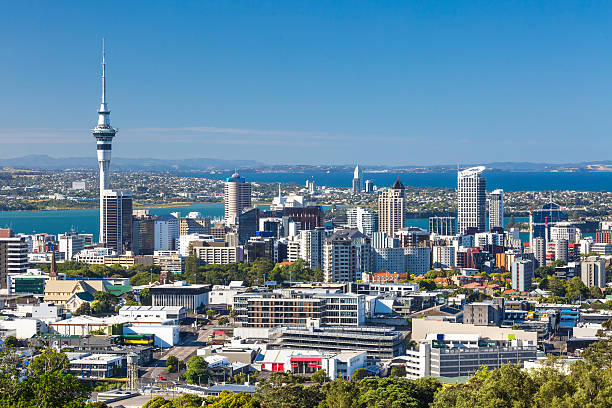Western Sahara Travel Guide: All you need to know to visit Western Sahara in 2024
Welcome to Western Sahara
Country Information of Western Sahara
Western Sahara is one of the most disputed territories in North Africa, bordered by Morocco to the north, Algeria to the northeast, the Atlantic Ocean to the west, and Mauritania to the east and south. The territory has been central to a long-standing conflict between the Moroccan government and the Polisario Front, a Sahrawi independence movement. While the United Nations considers Western Sahara a non-self-governing territory and recognizes the Polisario Front as the representative of the Sahrawi people, Morocco claims sovereignty over the region and controls most of its territory.
Geography
The country has an approximate total area of 266,000 square kilometers, making it roughly the size of Colorado in the United States. The landscape of Western Sahara is dominated by the vast expanse of the Sahara Desert, with rugged mountain ranges and rocky plateaus interspersed throughout. The region experiences a hot, arid climate with very little rainfall, and its population is concentrated in a few urban centers along the coast and oases throughout the interior. Despite its challenging environment, Western Sahara is the primary source of flora and fauna, including desert-adapted plants, mammals such as the dorcas gazelle and fennec fox, and various bird species.
Climate
Western Sahara has a hot, dry, and arid desert climate, typical of the Saharan region. The region experiences very little rainfall, with an average annual precipitation of fewer than 100 millimeters. The temperature in Western Sahara varies significantly between day and night, with daytime temperatures often exceeding 40 degrees Celsius (104 degrees Fahrenheit) and dropping to below freezing at night. The hot and dry conditions are due to the region’s proximity to the Sahara Desert and the influence of the trade winds that blow from the northeast. Western Sahara also experiences occasional dust storms and sandstorms, particularly during summer.
Population
The population of Western Sahara is a subject of ongoing dispute, and estimates vary widely. According to the United Nations, the territory’s total population is around 600,000, with most people concentrated in a few urban centers along the coast and smaller communities scattered throughout the interior. Most of the population are ethnic Sahrawis, predominantly Muslim people with a distinctive culture and language. However, the exact ethnic composition of the population is difficult to determine due to the region’s complex history and ongoing conflict. The Moroccan government, which administers much of the territory, has encouraged the migration of Moroccans to Western Sahara, further complicating the region’s demographics.
Government
The governance of Western Sahara is a contentious issue, with competing claims of sovereignty by the Moroccan government and the Polisario Front, a Sahrawi independence movement. The Moroccan government administers much of the territory, with the region being divided into three provinces and several smaller administrative units. The United Nations recognizes Polisario Front as the legitimate representative of the Sahrawi people and operates a government-in-exile from the Sahrawi Arab Democratic Republic (SADR), which is based in the Tindouf refugee camps in Algeria. The SADR maintains a parliament, presidency, and other government institutions, although its control over the actual territory of Western Sahara is limited.
Economy
Western Sahara’s economy largely depends on fishing, phosphate mining, and foreign aid. The territory has significant offshore fishing resources, with the industry accounting for a significant portion of its exports. Western Sahara also has extensive phosphate reserves, exploited by the Moroccan government-owned company, Phosboucraa. However, the revenues from phosphate mining are disputed, with the Polisario Front and other Sahrawi groups claiming that the resource exploitation is illegal under international law. In addition to fishing and phosphate mining, Western Sahara’s economy heavily relies on foreign aid, particularly from the European Union and other donor countries.
Language
The official languages of Western Sahara are Arabic and Spanish, reflecting the region’s colonial history and cultural influences. Spanish was the primary colonial language during the Spanish rule over the territory, which ended in 1975, while Arabic is the primary language of the Sahrawi people, the region’s indigenous inhabitants. Hassaniya Arabic, a dialect of Arabic, is widely spoken in Western Sahara, particularly in rural areas, and is the primary language of communication among the Sahrawi people. French and Berber languages such as Tamazight and Tashelhit are also spoken by some members of the population, particularly those who have lived or studied in other parts of North Africa.
Religion
The majority of the population of Western Sahara is Muslim, with Sunni Islam being the predominant denomination. Islam has been the main religion in the region for centuries, with the arrival of Arab and Berber tribes bringing the religion to the Sahrawi people. Religious practices in Western Sahara are primarily traditional, with many people observing local customs and traditions alongside Islamic practices. The region also has a small Christian minority, composed mainly of foreigners and expatriates.
Culture
The culture of Western Sahara is heavily influenced by the region’s history and geography, as well as its diverse ethnic and linguistic groups. The Sahrawi people, the region’s indigenous inhabitants, have a distinct culture characterized by hospitality, community, and traditional values. Music, poetry, and oral history are necessary cultural forms in Western Sahara, with many traditional songs and stories celebrating the region’s nomadic heritage and resistance to colonization. Traditional Sahrawi clothing, including the colorful robes known as djellabas and the headscarves worn by women, are also critical cultural symbols.
Recent History
In recent history, Western Sahara has been the subject of a long-standing conflict between the Moroccan government and the Polisario Front, a Sahrawi independence movement. Following the withdrawal of Spanish colonial forces in 1975, Morocco and Mauritania claimed sovereignty over the territory, leading to a war with the Polisario Front.
Related Articles

5 min read
New Zealand Introduces Key Changes to Post Study Work Visa : What You Should Know
According to the government, this change will provide students with greater flexibility in their academic choices while ensuring they remain eligible to work. For many students, studying abroad is a
Read More
5 min read
The Singapore visa processing time for Indian citizens
Singapore is a small island located in the Malay Peninsula in Southeast Asia. It is one of the most economically developed countries in the world. Singapore is a fantastic place
Read More
5 min read
How Much Does an Australia Trip Cost from India?
If you are planning a trip from India to Australia, you must follow some of the points. that are : Planning Budget Traveling date and time To which place you
Read MoreThe visas typically take between 510 working days to be processed.
A passport is usually an official document that certifies one’s identity and citizenship. On the other side, a Western Sahara visa is an official government document that temporarily authorizes one to be in the country.
All citizens require a visa and passport to travel to Western Sahara for business or tourism
Yes. One can fly from the Canary Islands (Spanish)
Western Sahara is considered generally safe, especially the Erg Chebbi dunes near Merzouga.
